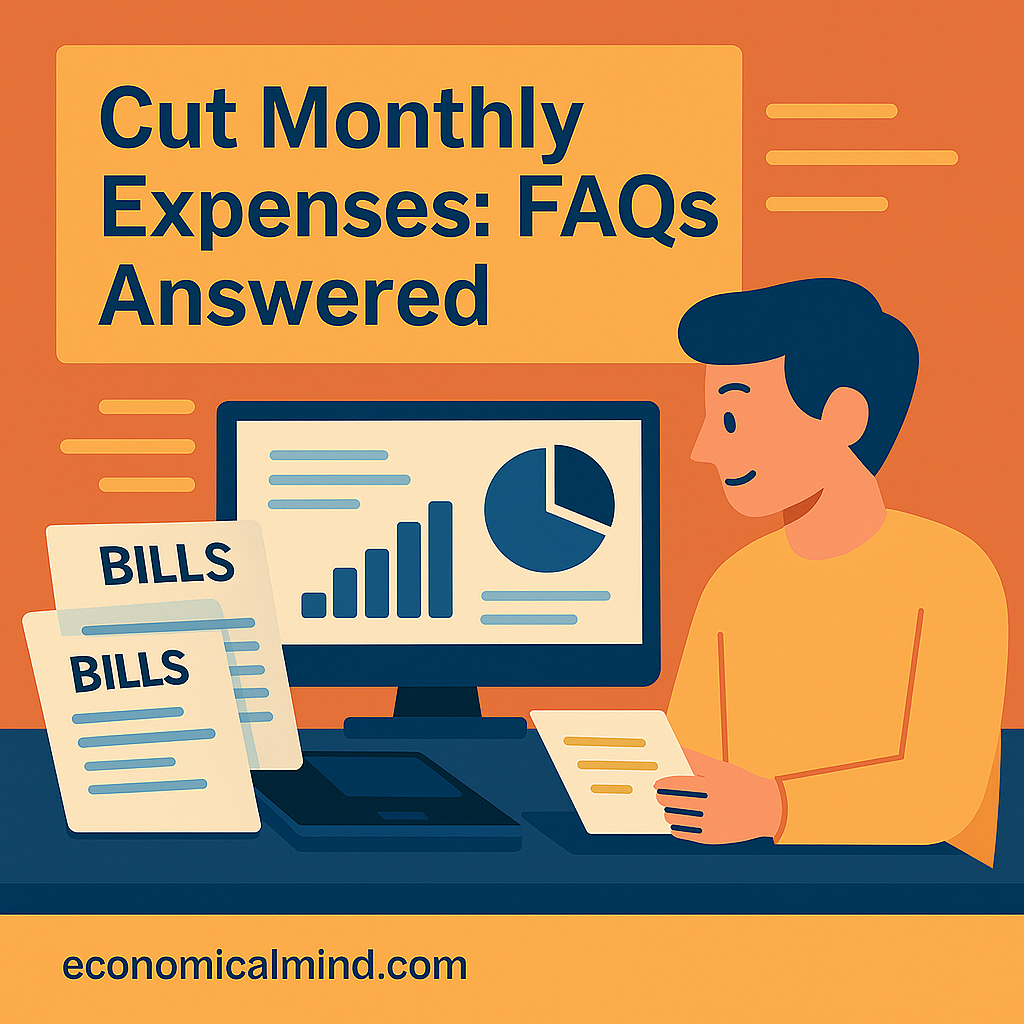
Saving money doesn’t always mean making major sacrifices. Sometimes, it’s about identifying small leaks in your monthly spending and sealing them up with smart, realistic strategies. Cutting expenses is one of the fastest ways to boost your financial stability—and you don’t have to give up everything you enjoy to do it.
In this article, we’ll answer the most common questions about how to cut monthly expenses effectively without feeling deprived.
Why Should I Focus on Cutting Monthly Expenses?
Reducing your expenses frees up cash for savings, debt repayment, or investment—without needing to increase your income. Think of it as creating “instant profit” in your personal budget.
When you consistently trim unnecessary costs, you:
- Build an emergency fund faster
- Reduce financial stress
- Have more flexibility for goals like travel or retirement
- Protect yourself from unexpected income loss
Cutting expenses is the foundation of long-term financial freedom.
What Are the Easiest Expenses to Cut First?
The easiest expenses to reduce are often the ones you’ve gotten used to without realizing their impact. Start with:
- Unused subscriptions – Review monthly charges for streaming services, apps, and memberships you rarely use.
- Food delivery and dining out – Cook at home a few more times per week. Small changes can save hundreds monthly.
- Impulse online purchases – Wait 24 hours before buying. Most “must-haves” will lose their appeal overnight.
- Premium plans and upgrades – Downgrade to basic tiers for phone, internet, or entertainment services.
By addressing these areas first, you’ll notice immediate savings with minimal lifestyle disruption.
How Can I Lower Utility Bills Without Major Changes?
You don’t need solar panels or a new HVAC system to save on utilities. Try these simple methods:
- Replace light bulbs with LEDs for up to 80% less energy use.
- Use smart thermostats to optimize heating and cooling.
- Unplug chargers and electronics when not in use.
- Wash clothes in cold water and air-dry when possible.
- Lower your water heater temperature to 120°F for safety and savings.
Even small habits can lead to noticeable differences in your monthly energy bill.
What About Groceries—How Do I Save Without Sacrificing Quality?
Grocery spending is one of the most flexible areas in any budget. To cut costs without compromising nutrition:
- Plan meals around weekly store sales.
- Buy in bulk for staples like rice, beans, and frozen produce.
- Use cash-back apps like Ibotta or Rakuten for extra savings.
- Try store-brand alternatives—many are made by the same manufacturers as premium labels.
- Limit food waste by prepping and freezing extra portions.
Planning and mindfulness are your best tools for slashing grocery bills.
How Do I Handle Recurring Payments Like Insurance and Loans?
Recurring payments can quietly eat into your budget. Review these categories at least once a year:
- Car and home insurance: Compare quotes annually; switching providers could save 10–25%.
- Student loans or personal debt: Look into refinancing for lower interest rates.
- Cell phone plans: Many carriers offer competitive plans for far less than legacy providers.
Proactive negotiation or refinancing can yield long-term, predictable savings.
What Apps Can Help Me Cut Monthly Expenses?
Technology makes it easier than ever to automate savings and identify waste. Some popular tools include:
- Truebill (Rocket Money): Tracks subscriptions and helps cancel unused ones.
- YNAB (You Need a Budget): Encourages goal-based budgeting and mindful spending.
- Mint: Offers a free, comprehensive view of your finances and alerts you to overspending.
- Honey or Capital One Shopping: Automatically applies discounts while shopping online.
These tools take the guesswork out of identifying and reducing unnecessary costs.
How Much Should I Aim to Cut Each Month?
A realistic goal is to start by cutting 5–10% of your total monthly expenses. For example, if you spend $3,000 per month, aim to reduce $150–$300.
The key is consistency. Even modest monthly reductions accumulate into thousands per year. As your habits improve, you’ll find additional ways to save without feeling restricted.
Key Takeaway
Cutting monthly expenses isn’t about living on less—it’s about spending intentionally. By trimming waste, optimizing bills, and using technology to your advantage, you can create meaningful financial breathing room every month.
Remember, every dollar you save brings you closer to financial independence.
